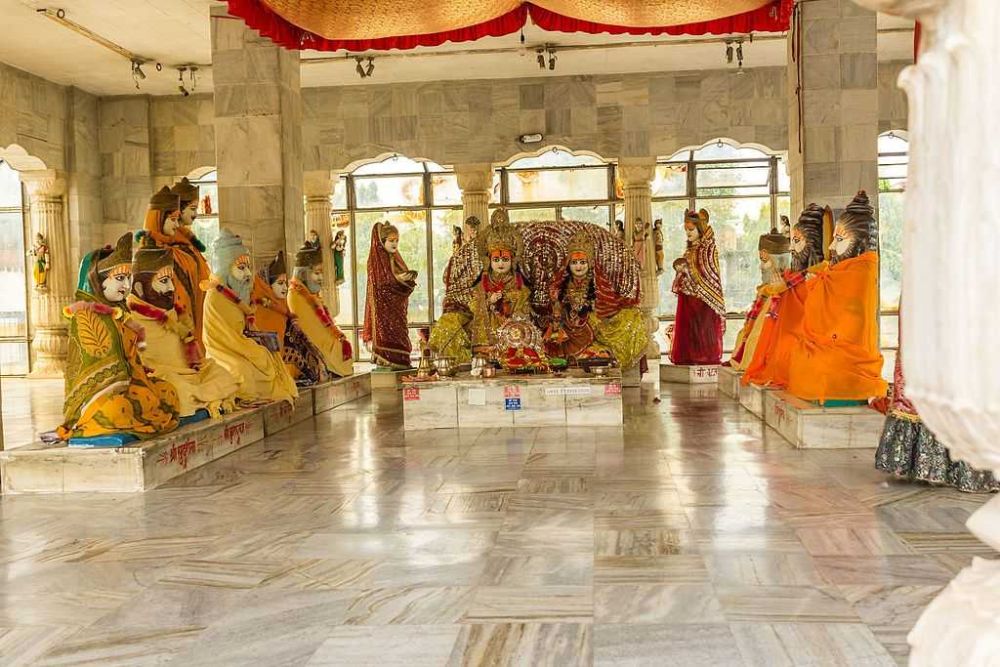

The sacred city of Janakpur in Nepal is steeped in deep spiritual and cultural significance, drawing pilgrims and tourists alike to its historical sites. Amongst these is the Ram Sita Vivah Mandap, also known as the Ram Janaki Temple, which holds immense importance in the Hindu epic, the Ramayana.
The ancient city of Janakpur was once the capital of the kingdom of Mithila, and the Ram Sita Vivah Mandap marks the legendary spot where Lord Ram and Goddess Sita were married. It is believed that the wedding ceremony of Ram and Sita took place here centuries ago, making it a site of great reverence for devotees.
The current structure of the mandap was built in the early 20th century and remains a testament to the timeless love story that is celebrated annually during the Vivah Panchami festival. This festival reenacts the marriage ceremony, attracting thousands of pilgrims from Nepal, India, and other parts of the world.
The history of tourism in Janakpur is closely tied to its religious heritage. For many years, the city has welcomed visitors keen on exploring its temples, sacred ponds, and the historical artifacts related to the Ramayana. The Janaki Temple, another prominent site, complements the tourism experience by providing a glimpse into the region's architectural grandeur.
In recent years, there has been an emphasis on improving infrastructure and visitor facilities to accommodate the growing interest in Janakpur's religious and cultural tourism. The establishment of the Janakpur-Jayanagar Railway has made the city more accessible, promoting a rise in domestic and regional tourism.
Eco-tourism and community-based tourism are emerging trends as well, with visitors seeking authentic experiences through homestays, cultural programs, and participation in local festivals. The development of these sustainable tourism practices aims to preserve Janakpur’s heritage while providing economic benefits to local communities.
For those planning to visit the Ram Sita Vivah Mandap, it is recommended to align their trip with the Vivah Panchami festival, which usually takes place in November or December. This event provides a vibrant and immersive experience into the rituals and festivities that are central to Janakpur’s identity.
Guided tours can offer deeper insights into the history and legends associated with the mandap, enabling visitors to appreciate the cultural context of their visit. With its fusion of historical depth and living tradition, the Ram Sita Vivah Mandap remains a cornerstone in the broader canvas of Nepal's religious tourism.
The Ram Sita Vivah Mandap is more than just a tourist spot; it is a living symbol of the cultural and spiritual legacy of Janakpur. Whether visitors are drawn by faith, interest in the Ramayana, or a sense of adventure, they leave with a profound sense of connection to the epic tale of Ram and Sita. Discovering the Ram Sita Vivah Mandap provides a unique opportunity to witness the confluence of myth and reality in the heart of Nepal.